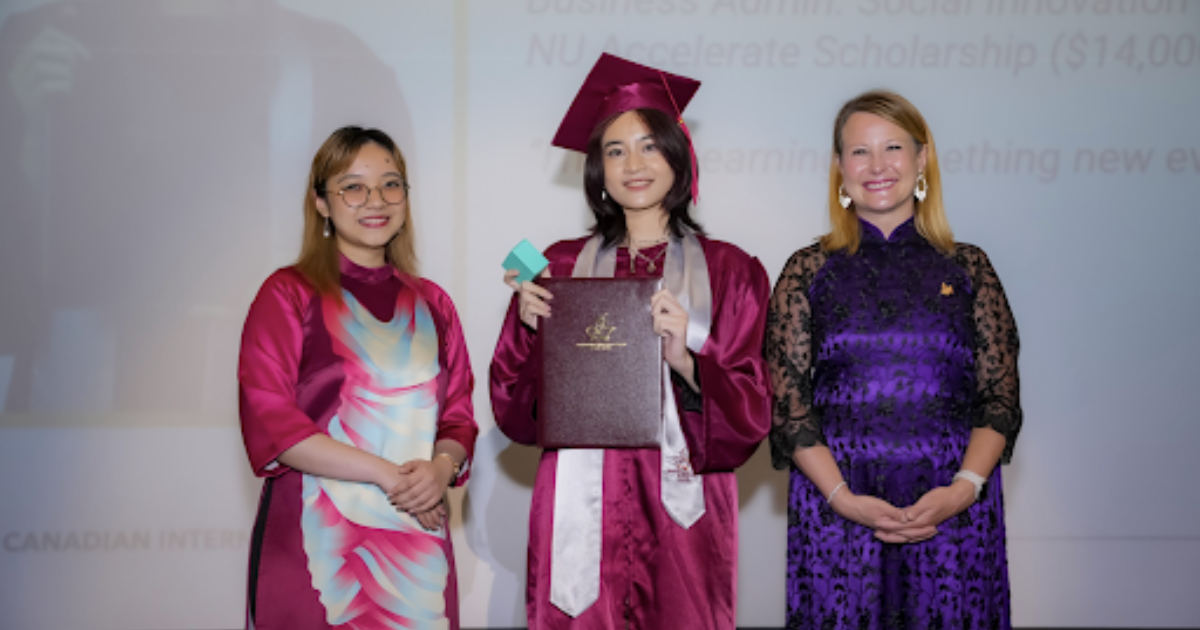
My experiences as an international student: How cultural diversity cultivated my global awareness
by Minh Tran
October 18, 2024
Spending my whole life growing up in Vietnam, I was surrounded by people that shared similar cultural identities as me. Most of the friends I’ve had come from the same cultural background, and we share similar mindsets, characteristics, and traditions. I didn’t acknowledge that until I got into Northeastern, a place where nobody comes from the same background, shares the same skin color, and has the same cultural experiences as me.
Other individuals at the university were also unaware of the drastic cultural differences we all had, which proved to be a challenge at some points. Still, it also helped us become more open-minded as we explored these other perspectives. According to Financial Times, “cultural agility is the ability to understand multiple local contexts and work within them to obtain consistent business results. For today’s global organizations, cultural agility is the new competitive edge.” Developing a culturally competent mindset, allowing cultural diversity to be introduced into my life, and integrating it into every aspect of my new environment, have significantly impacted my perspective, behavior, and values— both socially and professionally.
For the Consulting Case, I was assigned to be working in a team with a bunch of new people that I had never met and talked to before. It was not surprising because that is always how team projects are supposed to be — to work with people that you are not familiar with. However, this time, my team members are people whom I’m entirely strangers to and am even slightly intimidated by due to our different backgrounds. Coming to the United States was already a huge cultural shock to me. I was used to the lifestyle back in Vietnam, which is far from the same as Boston. I had a skewed version of the United States in my mind due to television shows and social media. Even the way people speak in Boston and the slang they use is different from my expectations; however, some of the phrases I learned from shows were said here verbatim. I was worried I wouldn’t understand how to fit in with my group and would struggle to communicate with the effects due to the cultural differences and the differences in dialect. This, thus, has left me in a double-edged sword situation.
First, when working with such a diverse team, it can be challenging to communicate and put your most effort into the project. Only some people came into the project with the exact expectations of everyone, and at times it felt like I was putting in more effort than others due to my commitment to our timing and planning. It was something that I was unprepared for because the way I worked on group projects back in my home country was very different from how I worked here. Back home, everyone would show up early or on time to group meetings, and no one would want to cancel. Here, people were more flexible and approved of changing meeting dates and times. This was one of my biggest challenges throughout the project because of the more lenient working style. Everyone came to university with a different idea of how they wanted it to be, and this led to mixed objectives throughout working on the project. Communication, I believe, is one of the most significant factors in group projects and the lack thereof made me immensely frustrated. There were times when it was tough to communicate and empathize with them.
However, the diversity of the groups comes with its benefits. With everyone coming from such unique perspectives, the cumulative ideas were an excellent opportunity for me to learn from multiple points of view and help me acknowledge the importance of backgrounds and how different people approach different challenges. Throughout working on the Consulting Case, the combined various knowledge of our team has helped us achieve a better perspective on the case. For instance, when we were working together on consulting In N Out to expand into the global market, we couldn’t decide which entry mode we would consult our client to adopt. There were mixed opinions and mixed arguments along the way. However, in the end, we finally came up with a reasonable conclusion by combining and compromising all of our ideas. It was a struggle initially, but we pushed through at the end with a maximized result. We learned from one another and have supported each other to reach the best of our potential.
Looking into the future, being able to grasp the importance of cultural diversity will give me a competitive edge and a huge step forward toward understanding the global marketplace. According to McKinsey’s research, businesses with high cultural, racial, and ethnic diversity in the workplace gain 35% higher returns than companies with lower diversity. This demonstrates how cultural diversity can alleviate the work productivity of the business environment. And although the significant cultural differences could sometimes be challenging, mainly as a foreigner, after coming here, I have found that after overcoming the first barrier of cultural change, you’ll realize the privilege of gaining more diversity of thought and perspectives that make learning more exciting and dynamic.
About the Author:
 Minh is an aspiring undergraduate student at Northeastern University. She is majoring in Business Administration with a concentration in Management and Marketing.
Minh is an aspiring undergraduate student at Northeastern University. She is majoring in Business Administration with a concentration in Management and Marketing.


